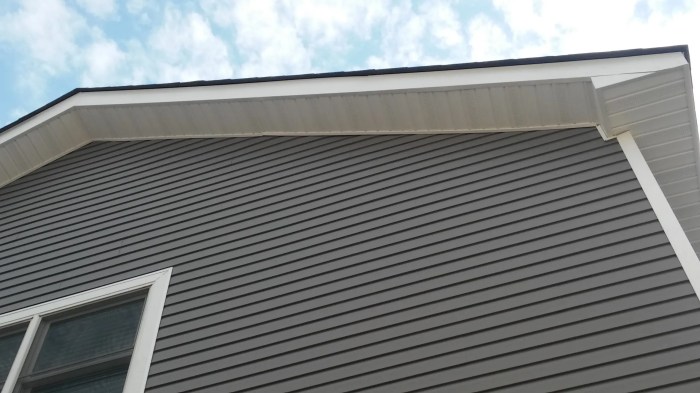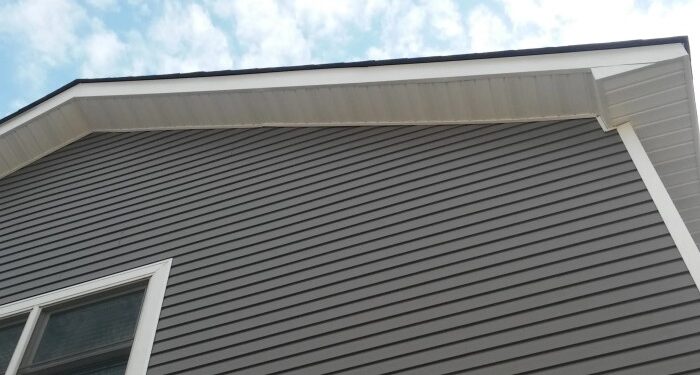Diving into the realm of global siding and roofing unveils a fascinating landscape of construction essentials. From innovative materials to sustainable practices, this overview sets the stage for a captivating exploration of this vital industry.
As we delve deeper, we'll uncover the significance of quality siding and roofing materials, the impact of global trends, and the evolution of roofing technologies over time.
Introduction to Global Siding and Roofing

Global siding and roofing play a crucial role in the construction industry, providing protection and aesthetic appeal to buildings worldwide. Siding refers to the external cladding material used to cover and protect the walls of a structure, while roofing encompasses materials and systems that form the top covering of a building.
The Importance of Quality Siding and Roofing Materials
Quality siding and roofing materials are essential for ensuring the durability, energy efficiency, and overall performance of a building. Durable siding and roofing materials protect the structure from harsh weather conditions, such as rain, wind, snow, and UV radiation, while also enhancing the building's curb appeal.
Impact of Global Trends on the Siding and Roofing Market
- Globalization has led to an increase in the availability of various siding and roofing materials from different parts of the world, offering builders and homeowners a wide range of options to choose from.
- Technological advancements have revolutionized the siding and roofing industry, leading to the development of innovative materials that are more durable, energy-efficient, and environmentally friendly.
- Growing environmental concerns have spurred a shift towards sustainable siding and roofing materials, such as recycled metal, wood, and composite materials, in response to the increasing demand for eco-friendly building solutions.
Types of Siding Materials
There are various types of siding materials used globally, each with its own set of characteristics and advantages. Let's explore some common options and compare their durability.
Vinyl Siding
Vinyl siding is a popular choice due to its affordability, low maintenance, and versatility in design. It is known for its durability and resistance to rot, insects, and extreme weather conditions.
Fiber Cement Siding
Fiber cement siding is a composite material made from cement, sand, and cellulose fibers. It offers excellent durability, fire resistance, and resistance to rot and insects. It can mimic the look of wood, stucco, or masonry.
Wood Siding
Wood siding provides a natural and timeless look to a home. While it requires more maintenance than other materials, it offers a unique aesthetic appeal. Cedar and redwood are popular choices due to their natural resistance to decay and insects.
Metal Siding
Metal siding, such as steel or aluminum, is known for its strength, durability, and low maintenance. It can withstand harsh weather conditions and is resistant to fire, rot, and pests. Metal siding is also eco-friendly and recyclable.
Innovative Siding Materials
Recent innovations in siding materials include engineered wood, composite siding, and insulated siding. Engineered wood combines wood fibers, resins, and wax to create a durable and sustainable option. Composite siding blends different materials for improved performance and aesthetics. Insulated siding incorporates foam insulation to enhance energy efficiency and reduce heating and cooling costs.
Roofing Systems Around the World
In different regions globally, various roofing systems are utilized based on factors like climate, culture, and available materials.
Popular Roofing Systems
- In North America, asphalt shingles are widely used due to their affordability and durability.
- In Europe, clay tiles are popular for their aesthetic appeal and longevity.
- In the Middle East, flat roofs made of concrete or stone are common to combat the intense heat.
Factors Influencing Choice of Roofing Systems
- Climate: Regions with heavy rainfall may opt for sloped roofs to facilitate water drainage.
- Cultural Influence: Some societies prefer certain roofing materials based on tradition and heritage.
- Availability of Materials: Remote areas may use locally sourced materials for practicality and cost-effectiveness.
Evolution of Roofing Technologies
Roofing technologies have evolved over time, with advancements in materials and construction methods improving durability and efficiency. From ancient thatched roofs to modern solar panels, the roofing industry continues to innovate to meet the changing needs of society.
Sustainability in Siding and Roofing
When it comes to siding and roofing, sustainability has become a key consideration in the construction industry. The focus on eco-friendly materials and practices has been increasing as more people become aware of the environmental impact of traditional construction methods.
Sustainable Practices in Production
In the production of siding and roofing materials, sustainable practices involve using renewable resources, minimizing waste, and reducing energy consumption. This can include sourcing materials locally to reduce transportation emissions, using recycled materials, and implementing energy-efficient manufacturing processes.
Benefits of Eco-friendly Options
- Reduced environmental impact: Eco-friendly siding and roofing materials help reduce carbon emissions and minimize waste that ends up in landfills.
- Improved indoor air quality: Many sustainable materials are low in volatile organic compounds (VOCs), which can improve the air quality inside buildings.
- Energy efficiency: Some eco-friendly materials, such as cool roofs or insulated siding, can help reduce energy consumption and lower utility bills.
Growing Demand for Green Building Solutions
The demand for green building solutions in the siding and roofing industry is on the rise as more homeowners and businesses seek to reduce their environmental footprint. This trend is driven by government regulations, incentives for sustainable construction, and increased awareness of the benefits of eco-friendly materials.
Closing Summary
In conclusion, global siding and roofing stand at the intersection of tradition and innovation, offering a glimpse into the future of sustainable construction practices. As demand for eco-friendly solutions grows, the industry continues to pave the way for greener, more efficient building structures.
Clarifying Questions
What are some common types of siding materials used globally?
Common siding materials include vinyl, wood, fiber cement, and metal, each offering unique benefits in terms of durability and aesthetics.
How do global trends impact the siding and roofing market?
Global trends such as climate change awareness and technological advancements influence the development of new materials and sustainable practices in the industry.
Why is sustainability important in the production of siding and roofing materials?
Sustainability ensures a reduced environmental impact, lower energy costs, and healthier living spaces for occupants, making it a crucial aspect of modern construction.














